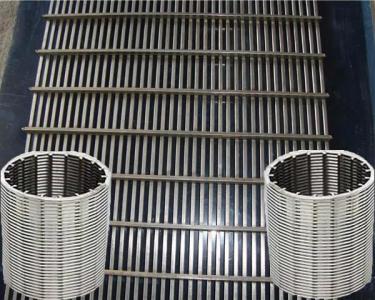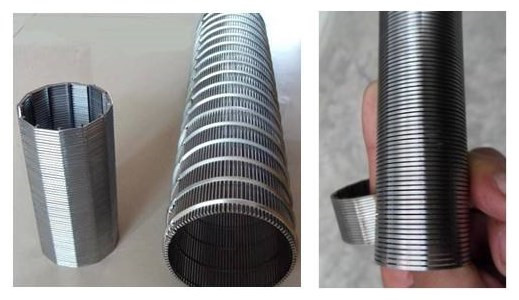Aluminum Alloy Gravity Casting Common Defects
[China Aluminum Network] First, the shrink hole This kind of defect often occurs in the thick part of the casting, or thick junction. Sometimes the surface of the casting is whitish, which is actually shrinkage. Causes: Insufficient casting compensation during crystallization; The introduction of alloy liquid is not correct; The temperature of each part of the metal type is not appropriate and does not conform to the principle of sequential solidification; Improper paint or paint shedding; Pouring temperature is too high; Casting speed is too fast; Casting cooling is too slow; Casting flash is too large. Prevention methods: Set up the riser in the thick part of the casting. The size and height of the riser should be suitable to achieve later solidification and improve the feeding effect of the riser. Distribute the inner sprue evenly around the casting, or fill the sprue from the root of the riser for additional casting; Adjust the temperature specifications of each part of the metal type to facilitate the solidification of the castings; Different coating compositions and coating thickness shall be selected according to the requirements of the working part of the casting and the position of the riser, and the stripping shall be evenly filled; Properly reduce the pouring temperature; Slow down the casting speed; In places where shrinkage easily occurs, copper cold iron or vent plugs are embedded to accelerate cooling. Second, cold This defect usually occurs on thin horizontal castings with a large horizontal surface, as well as in the alloy where the alloy sinks. After the casting has been cast out, it can be found by visual inspection. Causes: Mold temperature is too low; Aluminum liquid temperature is too low; Poor mold exhaust; Poor system design is poor, the number of in-gates is small, the cross-section is too small; The pouring speed is too slow or the pouring is interrupted; Casting design is too thin or lacks proper fillets. Prevention methods: Appropriately increase mold temperature; Appropriately increase the pouring temperature of molten aluminum; Ventilation slots or vent plugs are installed on the places where gas is not easily discharged, keeping the exhaust gas well; Appropriately increase the number of in-gates and the section of the ingate; Appropriately increase casting speed to avoid interruption of casting of molten aluminum; According to the design requirements of the casting design, a reasonable design of a smaller wall thickness and casting fillets. Third, stomata The pores are often generated in the upper part of the casting and often occur on the surface of the casting's convex part. Concealed pores inside the casting must be discovered through X-ray fluoroscopy and during processing of the casting. Causes: The pouring speed is too fast and it is involved in air; Poor mold exhaust gas; Aluminum liquid flows too fast; The melting temperature is too high; Degassing of the alloy is poor; Pouring temperature is too high; The sand core is not dry, the exhaust is poor or the air volume is too large. Prevention methods: Pouring metal liquid smoothly; Add exhaust slots or vent plugs to areas where metallic gases are not easily removed, and clean them regularly; Ladle the pouring cup as close as possible to the pouring cup; Strictly control the temperature of liquid aluminum to prevent overheating; Aluminum liquid is properly degassed; The mud core should be dried, the vent hole should be unblocked, and the mud core should be filled and bake after the tide is flooded. The extra large mud core should be hollowed out; Metal-type paint should be poured after the paint has dried. Fourth, crack Most of the cracks appear in the inner corner of the casting, where the thick and thin sections are transitioned. The location where the alloy liquid is introduced into the casting and where the casting stress is high can be found by coloring inspection, airtightness test, and X-ray inspection. Cold cracking of aluminum castings can be found by visual inspection after cleaning the sand core. Causes: There are sharp corners on the castings, and there is a great difference in thickness. Overheated mold or casting temperature is too high; Cold iron placement is not correct; Poor casting compensation; Prevention methods: Improve the design, clear the sharp corners of the castings, and try to make the thickness of the castings evenly transition and round; Correctly choose the gate, the location of the runner, control the pouring temperature, the thickness of the paint, correctly place the cold iron, and increase the feeder feeding capacity; Asbestos insulation coating was applied to the mold riser. Fifth, segregation Segregation is generally distributed in the center and upper part of the thick part of the casting and can be found when macroscopic analysis is performed. Causes: The molten aluminum composition before pouring is not stirred evenly; Pouring temperature is too high; The metal temperature is too high, the coating is uneven, and it is too thick. Prevention methods: Mix the alloy liquid as evenly as possible before casting; Properly reduce the pouring temperature and the preheating temperature of the metal type; Design cold irons, vent plugs or use air-cooled or water-cooled in locations where cooling is slow; Adding elements that hinder segregation of the alloy; The thickness of the casting is appropriately thinned to accelerate solidification.
Mine sieving Mesh/ mine sieve screen wire mesh is a kind of metal mesh components for sifting and filtering.
Mine sieving Mesh/ mine sieve screen wire mesh used for sifting, filtering, drying, etc.
Wire mesh screen offers high strength and conveying strength, can be made into different sifting and filtering devices.
1.Material:Stainless Steel Wire Mesh.
Mining Screen,Mining Tools,Underground Mining Screen,Stainless Mining Screen Anping Shengjia Hardware Mesh Co.,LTD , https://www.oilshaleshakerscreen.com
2.wire dia:1.5mm-12mm
3.sheet size: 1x2m,1.2x2.4m or as requests.

